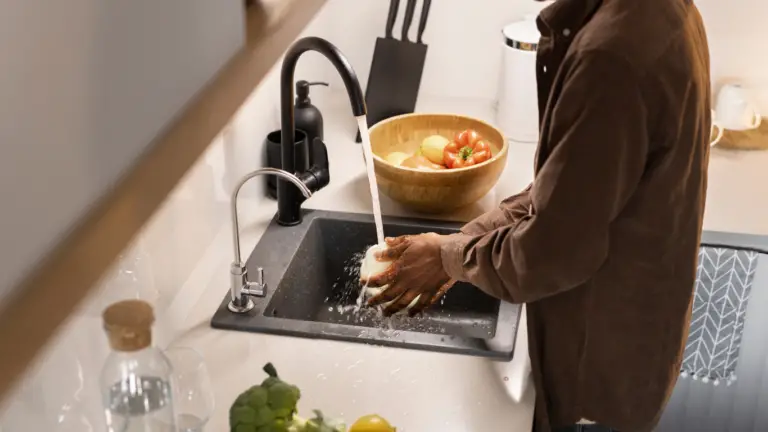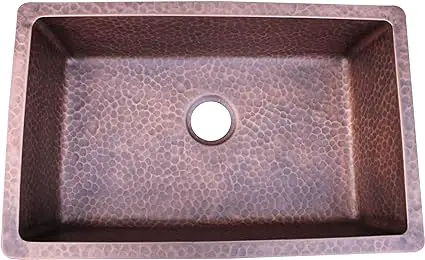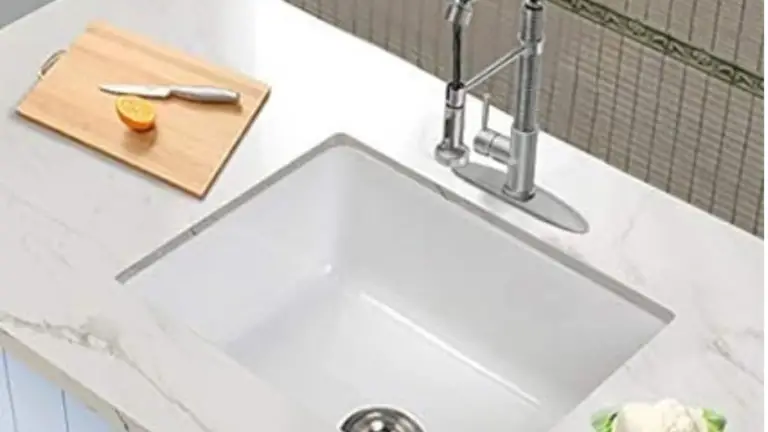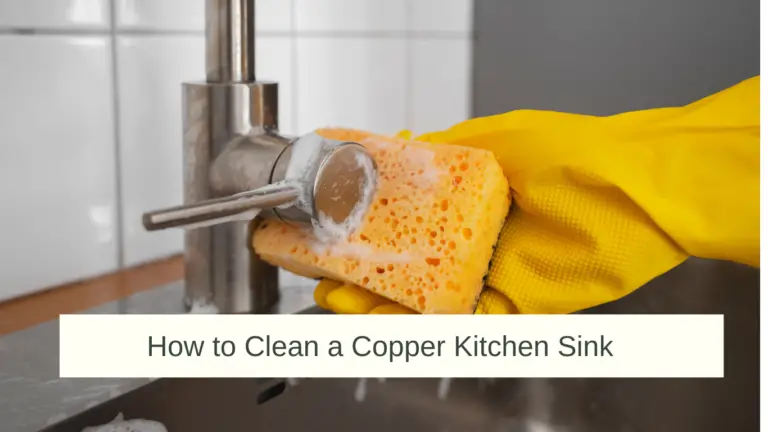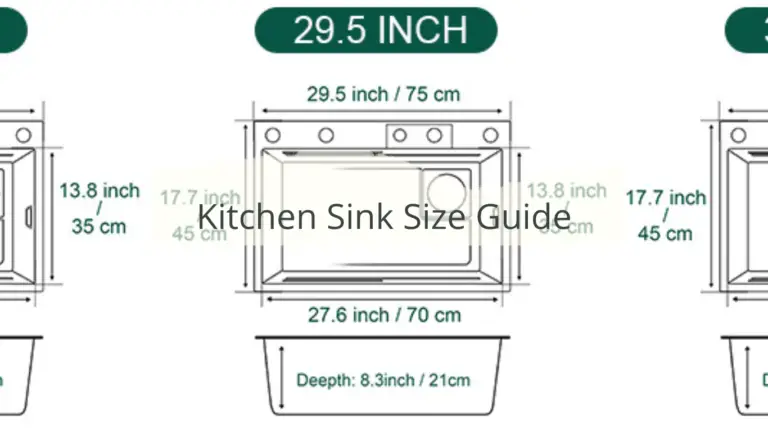Silgranit Kitchen Sinks: Everything You Need to Know!
This post may contain affiliate links which means I may receive a commission for purchases made through links.
Blanco is one of the leading manufacturers of granite-like, composite, and granite sinks, having manufactured millions of sinks within the 30+ years they have been in business. However, one of the best kitchen sinks from this brand is the Silgranit kitchen sink. Most kitchen designers even claim it’s the most durable sink on the market.
But is that true? What is a Silgranit kitchen sink in the first place? What are its pros and cons? Is it the right kitchen sink for your home?
Relax! Take it easy! In this article, I’ll tell you everything you need to know about Silgranit kitchen sinks, including their pros and cons, to help determine if it’s the right fit for your project!
Let’s get started!
What is a Silgranit Kitchen Sink?
A silgranit kitchen sink is a type of sink that is manufactured by Blanco and made up of 80% natural granite. To be precise, this composite material is made by mixing finely ground granite with high-quality acrylic. Pigments are then added to the mixture, which is then cast in a single pouring to enhance its strength and durability. More importantly, these sinks are only made by Blanco as it holds the exclusive patent for Silgranit sinks.
It’s also worth mentioning that silgranit sinks are available in different styles, sizes, colors, and types. Specifically, they’re produced in 9 various nature-inspired colors and available in 8 different collections, including modern farmhouse-style kitchen sinks.
Pros of Silgranit Kitchen Sinks
-
Heat resistant
Silgranit kitchen sinks are heat resistant and can withstand temperatures of up to 280 deg C (536 deg F), meaning they can tolerate common boiling and baking temperatures. Therefore, putting hot pots and pans on a Silgranit sink will not affect its durability or damage its surface in any way.
-
Scratch & Stain resistant
Since Silgranit is made up of 80% granite natural granite, it’s scratch-resistant and has the same properties as other stone products used to make similar countertops and sinks. For that reason, it’s naturally resistant to cutting and any cutting activity that occurs around the sink. At the same time, it will resist normal blows and impacts that are caused by falling it without causing it to crack or chip.
In addition, these sinks do not rust and are resistant to stains. As a result, they will hold up well to various types of liquids and acidic substances.
-
Easy to clean & maintain
Maintaining and keeping a Silgranit kitchen sink clean is much easier than other kitchen sink materials. One reason for this is that you don’t need any special chemicals or harsh chemicals. Instead, you can easily wipe the sink clean with a soft, non-abrasive cloth, rinse it, and wipe it dry with a soft cloth to remove any soap foam build-ups and water spots.
Liquids will not seep into the surface of Silgranit sinks as the granite powder is sealed with resins. Nonetheless, you should avoid using any harsh cleaners or bleach when cleaning these sinks.
-
Abundance of styles and finishes
Silgranit sinks are available in a wide range of colors, styles, and finishes. Specifically, there are 8 color options and more than 30 styles of Silgranit kitchen sinks. Even better, the color of these sinks is the same throughout their body since they’re cast in a single pouring. However, the underside of the sinks may appear rough in texture due to the production method, but that doesn’t affect the strength or durability in any way.
All in all, these numerous options make it easy to find a Silgranit sink that will work well with your kitchen design.
-
Durable
Silgranit is a naturally strong and tough material, allowing it to withstand daily wear & tear. Plus, it’s resistant to most hazards in the kitchen, so it will not get damaged easily. As a result, you can expect it to last for years as long as you maintain it properly.
Moreover, Silgranit sinks do not discolor or fade over time, even when exposed to direct sunlight. This makes them ideal for use in sinks in front of windows and also for outdoor use.
-
Antibacterial and hygienic
It’s also worth mentioning that Silgranit sinks are perfectly safe to use for food preparation as they are completely hygienic. More notably, they have antibacterial properties and even feature a patented Hygienic+Plus surface protection formula. This defensive shield helps to reduce bacteria growth on the sink surface by up to 98%.
-
Cheaper than real granite
If you want a kitchen sink that looks like real granite but want to save on cost, Silgranit is one of the best options available. Despite using powdered granite, Silgranit sinks retain the natural beauty of the stone. Therefore, you’ll get an aesthetically pleasing sink that feels like natural stone but without the vulnerabilities of natural granite.
Best of all, Silgranit kitchen sinks are much more affordable than their natural granite counterparts. Generally speaking, authentic granite sinks usually cost between $1000 and $5000, depending on various factors. However, silgranit sinks can cost about $350 – $500 for the entry-level design, and still provide more practical benefits than other sink options.
-
Lightweight
Silgranit kitchen sinks are relatively lighter than natural granite and standard cast iron sinks. For that reason, they’re much easier to handle during installation and ideal for use in under-mount sinks. In addition, these sinks feel softer to the touch, providing an enjoyable experience when cleaning up or washing dishes.
Cons of Silgranit kitchen sink
-
More costly than other types of kitchen sinks
Despite being cheaper than natural granite kitchen sinks, Silgranit is more costly than other common types of sinks. As already mentioned, basic Silgranit sinks cost between $350 and $500 for DIY installation. In comparison, stainless steel sinks can cost as low as $50.
-
Susceptible to certain harsh chemicals
Although Silgranit sinks are resistant to staining from most substances, it’s important to follow the recommended caring instructions from the manufacturer. This is because they’re vulnerable to some harsh chemicals like chemical-laden cleaners, drain-blocking chemicals, and abrasives.
-
Limescale & calcium deposits can be difficult to remove on Silgranit sinks
Finally, hard water can leave behind limescale and calcium deposits on your silgranit sink. These deposits tend to absorb liquids, reducing the beauty and appeal of the sink in the long run. For that reason, it’s important to address any limescale deposits on your sink surface right away to prevent the absorption of liquids.
On the bright side, you can use a commercial descaling agent such as Lime Away or CLR (Calcium Lime Rust) to remove limescale buildup and dissolve stains like calcium & iron oxide. Alternatively, you can use a mixture of warm water and white vinegar to get rid of the limescale build-up.
How to clean a Silgranit kitchen sink
One major benefit of investing in a Silgranit sink is that it requires hassle-free maintenance as it’s very easy to clean with minimal effort. Better yet, you’ll only need a mild dish detergent/ washing gel, a soft microfiber cloth, and some water.
Routine cleaning
For routine cleaning, just wipe the sink with a soft sponge/ cloth and dish detergent, then rinse the surface with water to remove any food debris.
Alternatively, you can opt for Blanco’s Blancoclean composite cleanser, which is ideal for use in light-colored sinks. As for the dark-colored sinks, you can sprinkle some baking soda and scrub the sink lightly with a sponge/ cloth, before rinsing it well and wiping it dry to prevent the buildup of water spots.
Deep cleaning
Basic deep cleaning of Silgranit kitchen sinks is recommended every couple of months to remove any debris and deposits. To do that, close the drain of your silgranit sink, put some washing gel/ soft laundry detergent powder in the sink, fill it with water, and leave the mixture for at least 2 hours or overnight. Next, drain the solution, rinse the sink with clean water, and wipe it dry with a clean microfiber cloth.
Simple surface stains
To get rid of simple stains on your Silgranit sink, simply wipe the surface with a mixture of mild dish detergent and warm water. Then rinse the sink surface well and wipe it dry with a cloth to restore its luster.
Things to avoid when cleaning your silgranit kitchen sink
Using certain chemicals to clean your silgranit kitchen sink can void its warranty. For that, it’s important to follow the manufacturer’s instructions and labels that come with the sink. For instance, you should avoid using chemical-laden cleaners, steel wool, and drain-blocking chemicals as they can accidentally damage your sink. Also, commercial alkalis like ammonia and aggressive cleaners are not ideal for use on Silgranit kitchen sinks.
Conclusion
Given the impressive qualities and several benefits of a silgranit sink, it’s certainly a worthy investment for your home. Actually, silgranit may be better than most kitchen sink materials on the market. Plus, this material is designed to be both aesthetically attractive and naturally tough, allowing it to withstand the daily wear & tear of heavy kitchen use. Best of all, Blanco offers a limited lifetime warranty with all silgranit sinks used in single-family residences.


